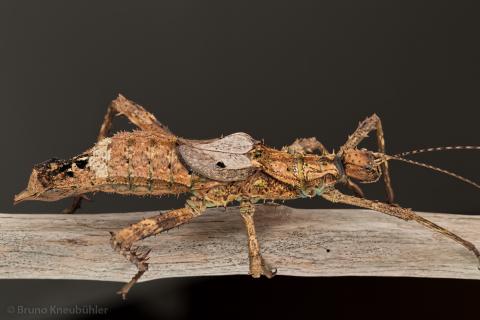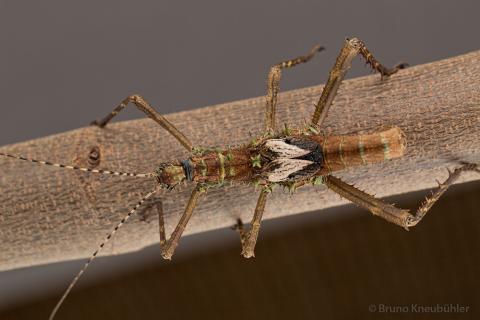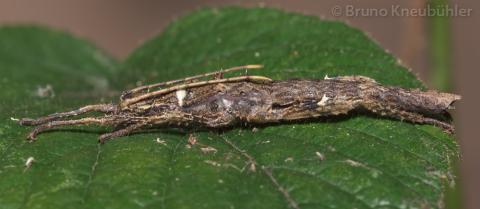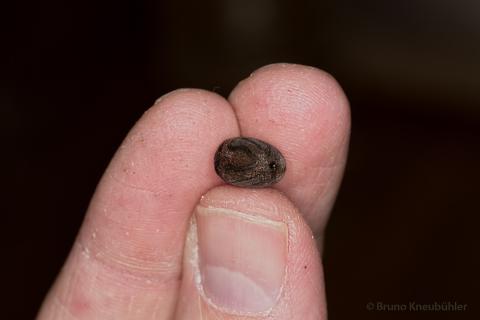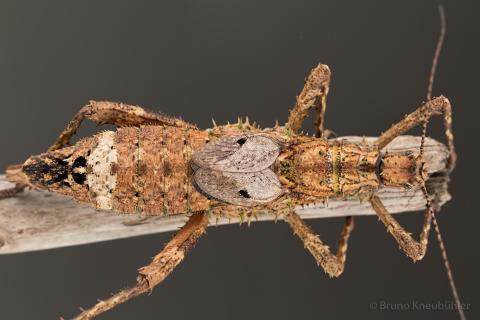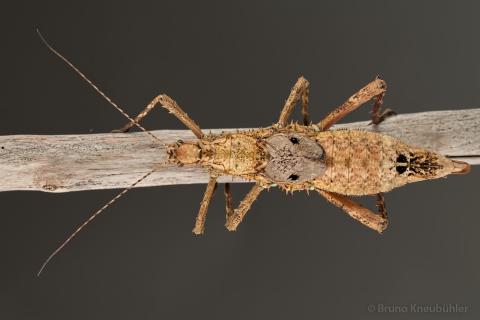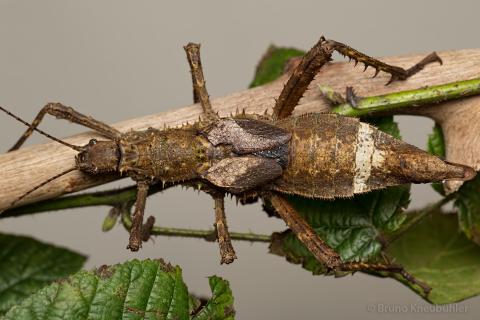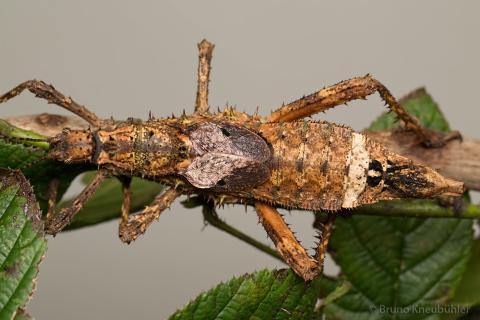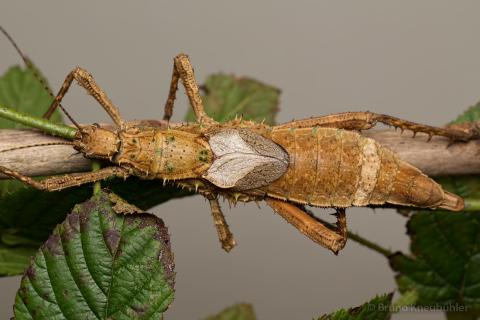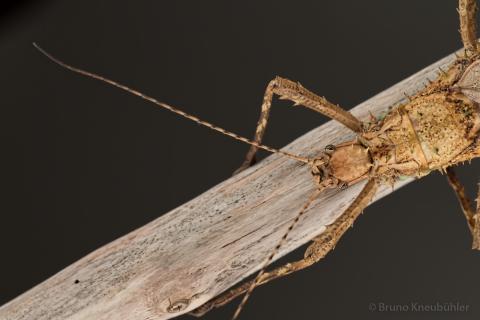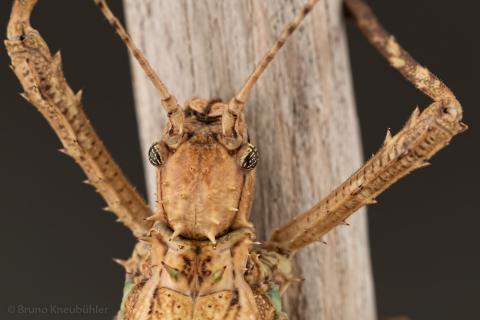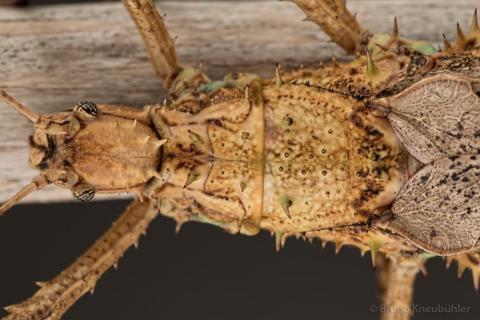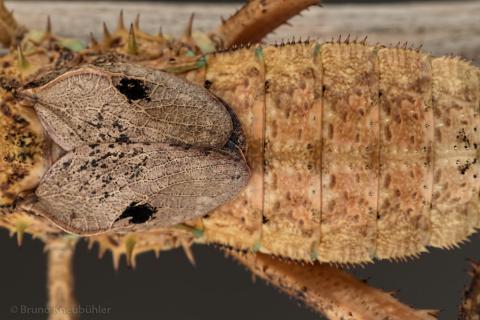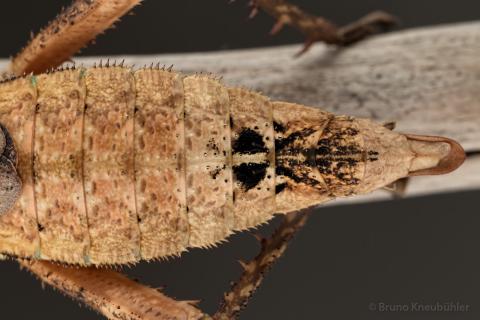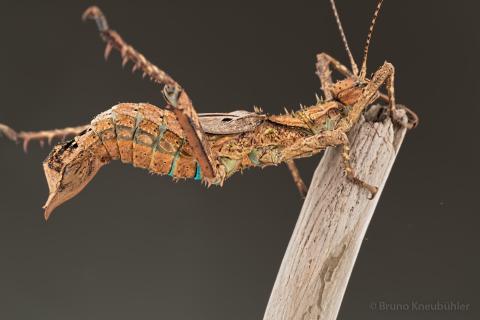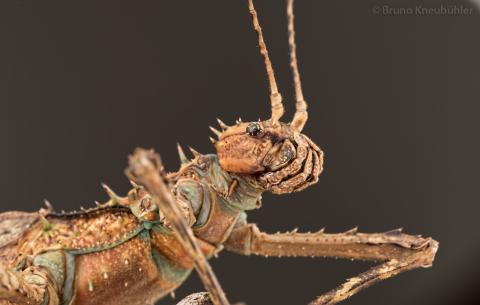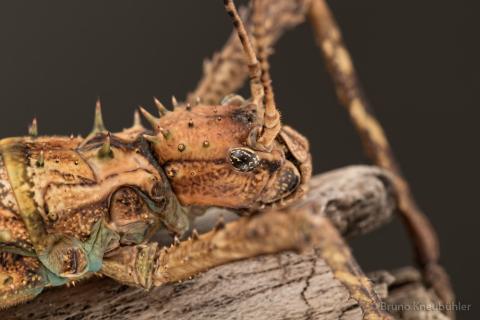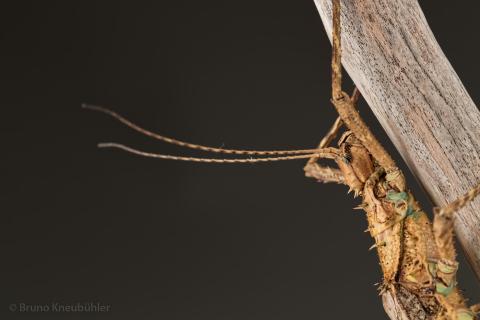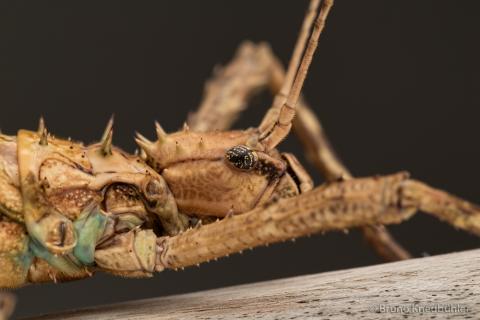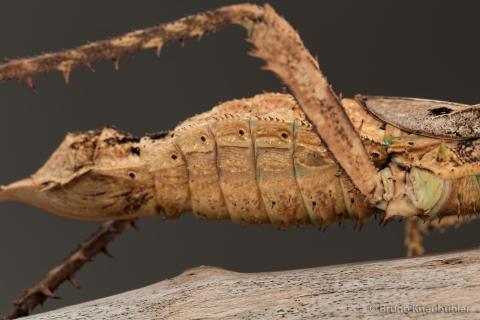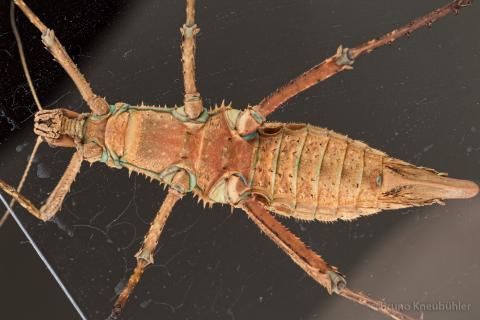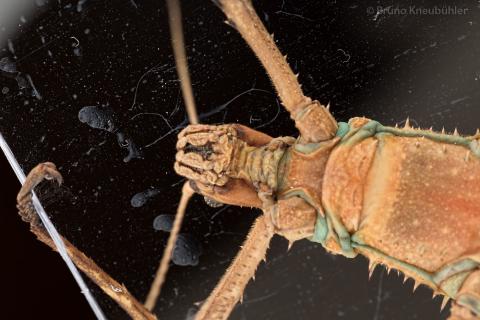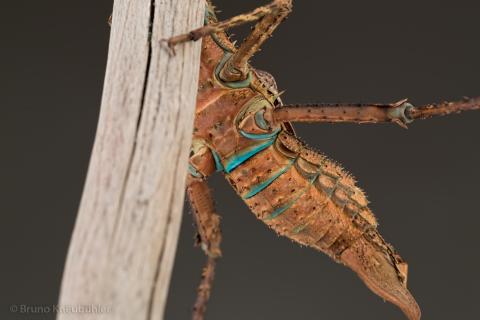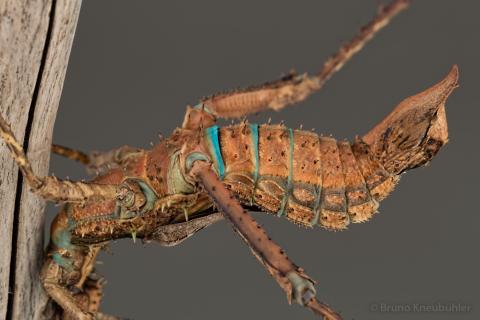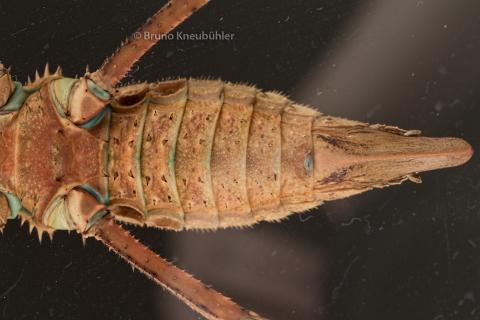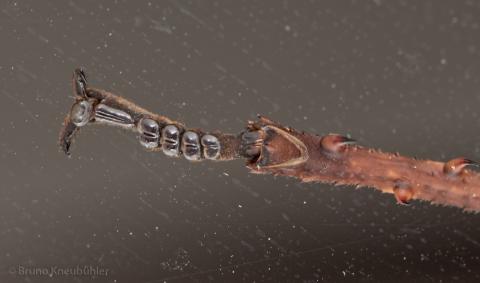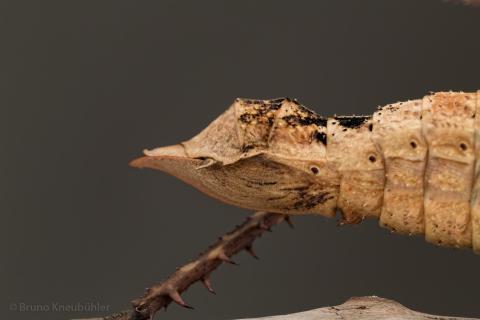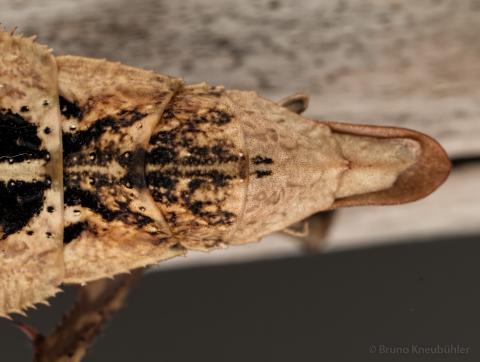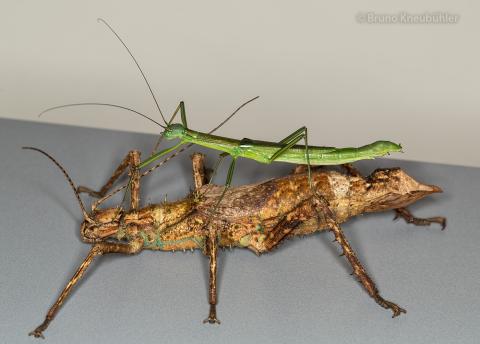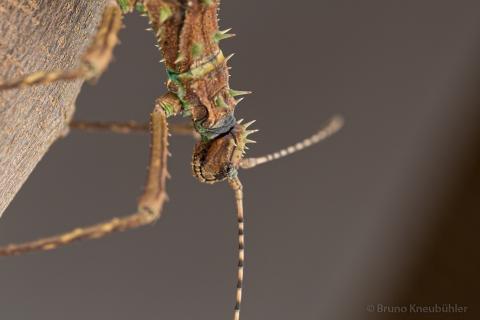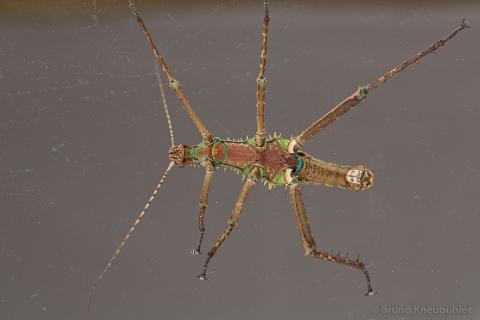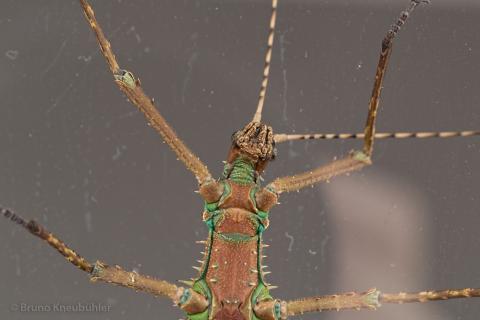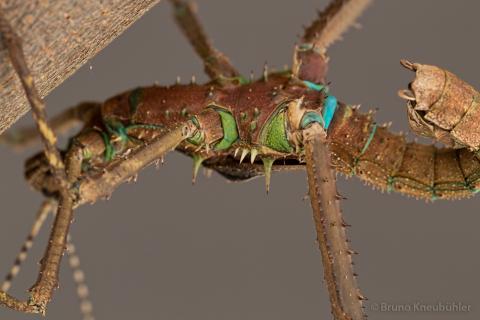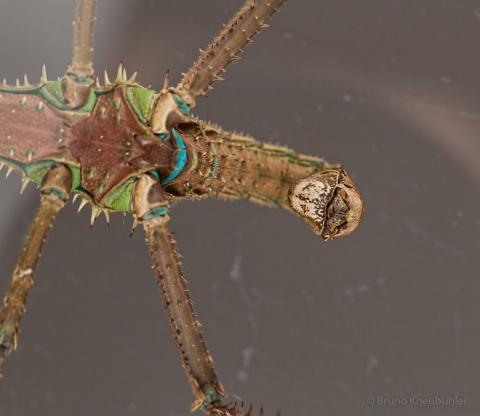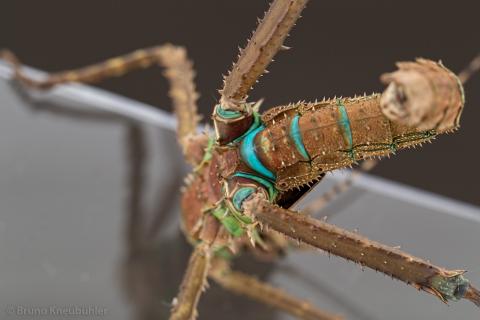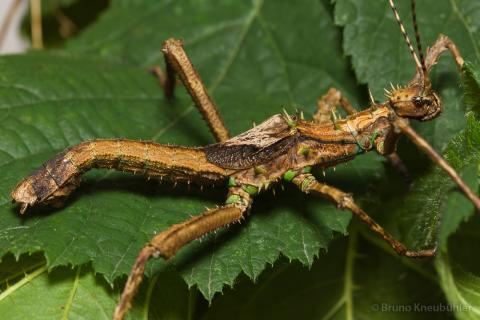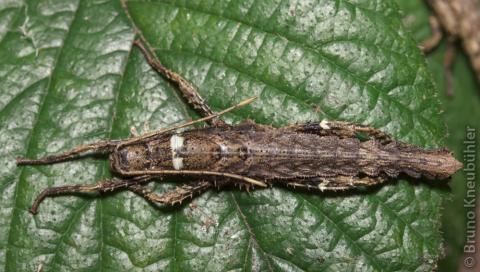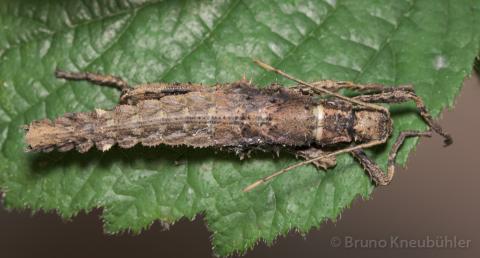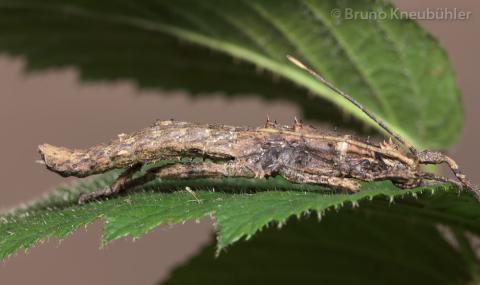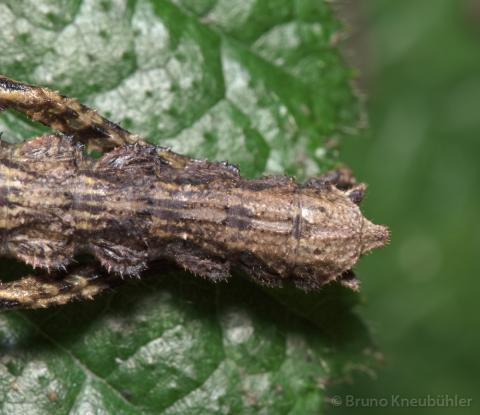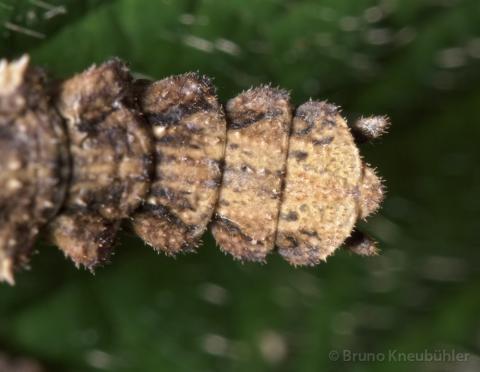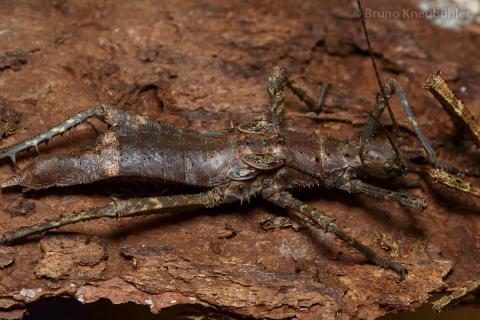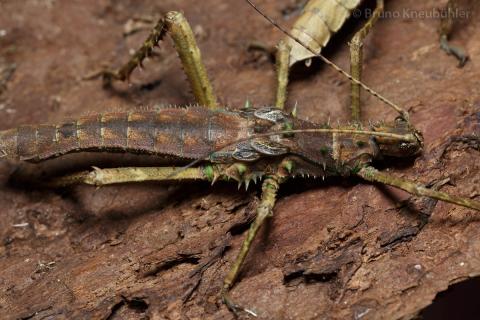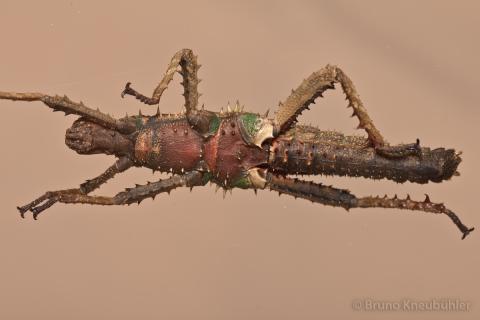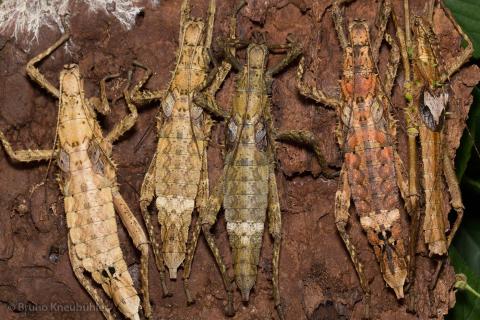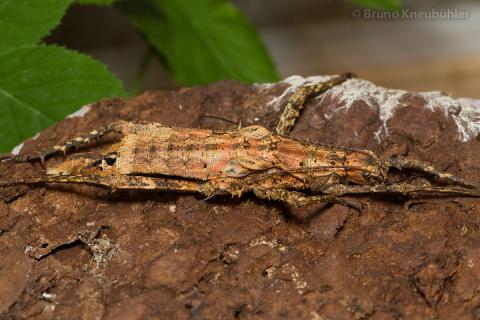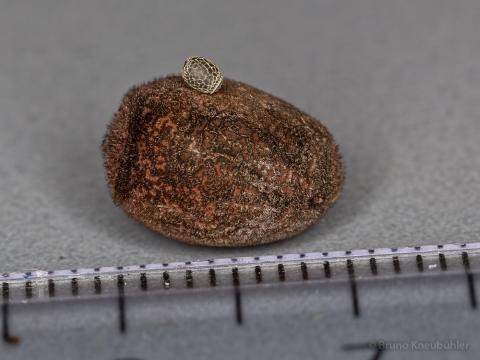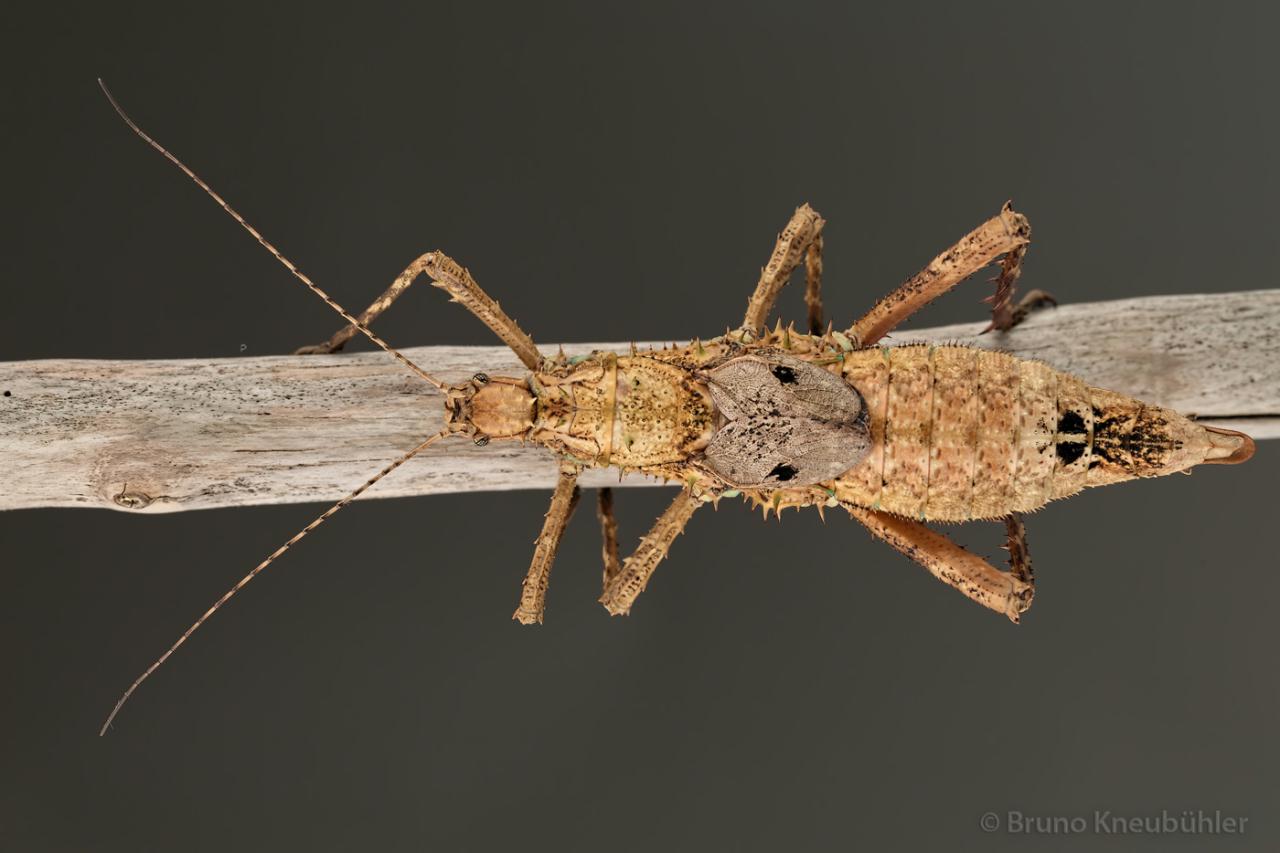
Genus
Species
Stock
CLP
574
PSG
26a
Culture status
In culture
Foodplants
Bramble (Rubus spp.)
Salal (Gaultheria shallon)
Hazel (Corylus avellana)
Ivy (Hedera helix)
Breeding notes
(by Bruno Kneubuehler)
General Notes
- the genus Haaniella has been set up by Kirby in 1904, to honor the dutch zoologist Wilhem de Haan
- the greek echinos means hedgehog, and the prefix echin- or echino- refers in greek to „spiny, pionted“
- at the moment (January 2013) the genus contains 7 acknowledged species. and a yet undescribed new species (Haaniella sp. „Sibayak“) is known
- Redtenbacher described H. echinata in 1906 as Heteropteryx echinata
- Attention – the culture stock by Dr. Francis Seow-Choen has been collected in two different localities and specimens from both localities have been mixed up. Therefore this is no pure culture stock !
_________________
Culture History
- over the years Haaniella echinata has been imported several time by different phasmid enthusiasts from different locations on Borneo. Most cultures nowadays must be mixed cultures
- 2010 – first successful culture of a fresh stock culture from Niah-Lambir by Dr. Francis Seow-Choen
- 2012 – culture of the Niah-Lambir culture by Bruno Kneubuehler
- 2013 – this culture has been distributed to other breeders as Haaniella echinata „Niah-Lambir“
_________________
Origin
- Niah Caves and Lambir Hills (Malaysia, Borneo, Sarawak)
_________________
Females
- very sturdy and spny phasmids
- about 12.5 cm long
- usually very contrasty colored
- coloration amongst females very variable
- mainly different shades of brown, with dark or almost black and white markings
- the short forewings cover the hindwings completely
- coloration of the forewings is usually different from the main body coloration
- hindwings are black
- numerous spines on the head, thorax, legs and abdomen – some spines are big
- abdominal spines lateral and ventral
- especially the tibiae (lower legs) of the hindlegs have big, pointy spines
- short, „truncated“-looking „ovipositor“ (this is no anatomically true ovipositor)
- antennae longer than forelegs and usually annulated
- the ventral membranous connections between the first abdominal segments are bright blue (visible in their defence position)
- the area apicalis, on the lower end of the tibias, is very well visible
_________________
Males
- also very sturdy looking and spiny phasmids
- about 8.5 cm long
- the coloration amongst males is much more consistant, though there are lighter and darker specimens
- mainly different shades of brown
- green spines, some of which have dark tips
- ventral side with green areas
- the short forewings cover the hindwings completely
- forewings often with a light colored area in the middle, while the lateral (outer) margins are dark or almost black
- antennae strongly light-dark brown annulated
- numerous spines, especially those on the head and thorax are big and pointy
- especially the tibiae (lower legs) of the hindlegs have big, pointy spines
- the ventral membranous connections between the first abdominal segments are bright blue (visible in their defence position)
- the area apicalis, on the lower end of the tibias, is very well visible
_________________
Nymphs
- freshly hatched nymphs are already very big, about 3.5 cm – hatching from huge eggs
- antennae with light tip (L1)
- freshly hatched nymph do already have numerous small spines
- even in L1 it is quite easy to draw a distinction between ♀♂ (see photos on the right)
- older nymphs are colored very variable and contrasty
_________________
Eggs
- huge eggs
- about 0.3 g per egg (which makes it about 150-times heavier than a small egg of Micadina sp. „Cuc Phuong - see photo on the right)
- elongate - oval
- surface is a velvety
- brown
- micropylar plate is big and roughly X-shaped
- no distinct capitulum on the operculum (egg lid)
_________________
Food Plants
- bramble (Rubus sp.)
is very well accepted by freshly hatched nymphs, older nymphs and adults. In late winter, they might become choosy about bramble. Then one can offer them ivy as an alternative - Salal (Gaultheria shallon)
well accepted by adults (not yet tested with nymphs) - hazelnut (Corylls avellana)
well accepted by adults (not yet tested with nymphs) - ivy (Hedera helix)
well accepted by adults (not yet tested with nymphs) - most probably they feed on a wide variety of food plants, as Haaniella are known to be quite polyphagous
_________________
Behaviour
- young nymphs usually feign death when being touched
- older nymphs and especially the adults can display a rather vehement defense reaction, when they feel threatened
- the defense reaction of older nymphs and adults is that they bend up their abdomen, so that the hindlegs can strike at the aggressor. In this position, the bright blue areas on the ventral side become visible
- adults have an additional aspect to their defense reaction, they can produce a loud, rustling noise with their hindwings – which most probably also serves to distract and unsettle the aggressor
- otherwise nymphs and adults like to hide out motionless in a dark place during the day, and they move about and feed during the night
- big pieces of bark, which lean against the side of the cage, are well accepted as a hiding place
- especially adults can display a rather wasteful feeding behaviour – they often bite through the leaf stems, and thus many leaves fall to the ground without being eaten
- matings occur frequently, and males can stay with the same female for some time
- females stick their eggs with their „ovipositor“ into a suitable substrate, this can also be dry sand
- females lay 8 - 11 eggs per clutch, and about 1 clutch per month
_________________
Developement
- incubation time (HH-incubation on slightly damp sand at 20 - 23 °C) is about 5 and more months
- if the eggs are reburied in a substart (which is not essential though), then one has to make sure that the egg lid (operculum) is at the top towards the substrate's surface
- spread some dried moss over the eggs (if the eggs are not reburied) - this will make it much easier for the nymphs to hatch unscathed and it also reduces mould growth to some extend
- hatching ratio is high (> 40%)
- males will be adult after about 9 – 10 months (at 20 – 23°C), females after about 10 – 11 months
- females start laying eggs after about 4 – 5 weeks
- about 10 eggs per female and month
- adults can live for 12 months and more, but males seem to be more short-lived than the females
_________________
Breeding Notes
- my general notes on how to breed phasmids are an integral part of this care sheet ...
- it is very easy to breed this species
- as the freshly hatched nymphs are already very big, therefore the incubation container should be big enough
- I recommend to keep the nymphs seperate from the adults, which makes it much easier to monitor their developement and they are protected from being disturbed or even harmed by the much bigger adults (like during their moults)
- keep the nymphs in a cage with reduced ventilation
- a constantly wet paper towel on the floor of the cage helps raising humidity
- a humidity level of about 65+ % rH (for adults) and 75+ % rH (for nymphs) seems to be fine
- make sure that the increased humidity and reduced ventilation does not allow for a lot of mould growth (cleanliness !)
- nymphs can be kept in a Faunabox (or similar cages like Faunarium)
- move nymphs to a bigger cage as they grow bigger
- a cage of at least 30 x 30 x 30 cm should be provided for 2 adult couples of this species (or considerably larger if the cage also contains other species !)
- generally I advise to keep different phasmid species seperately (unfortunately, overcrowed cages are still too common ...)
- I have never sprayed nymphs, adults or their cage with water
